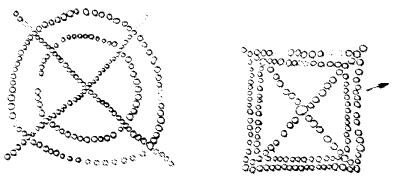The Pecked Cross Symbol In Ancient America
Twenty-nine instances of the so-called "pecked cross" have been collected by the authors of the present article. Usually consisting of two concentric circles centered on orthogonal axes, this cross design is found carved on rocks and in the floors of ceremonial buildings throughout Mesoamerica. Such a motif would ordinarily not evoke much comment, but here the figure is formed from many small, evenly spaced depressions so arranged as to hint at larger meanings. For example, many pecked crosses have 260 depressions, suggesting a calendric interpretation (i.e., the 260-day Mesoamerican cycle). On some occasions the cross arms are astronomically oriented. In addition, the holes may have been used to hold pieces in ritual games similar to patolli. The pecked crosses are widespread and were apparently quite significant to the ancient Mesoamericans. Perhaps, the authors suggest, the figures had a composite astronomical, calendric, and ritual purpose. This would be consistent with the Mesoamerican cosmological belief that everything is interlinked and that the works of man must be, too.
(Aveni, Anthony F., et al; "The Pecked Cross Symbol in Ancient Mesoamerica," Science, 202:267, 1978.)

